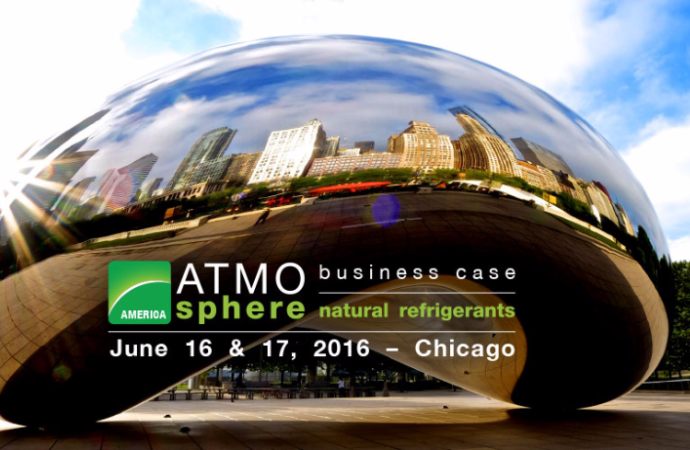For the third consecutive year, ATMOsphere America 2014 gathered HVAC&R industry experts with the aim of supporting the adoption of natural refrigerant technologies across North America. Held for the first time in San Francisco from June 18-19, the conference attracted more participants than ever before and heard from over 60 speakers.
The specialized mix of nearly 250 attendees included system and component manufacturers, regulators such as Underwriters Laboratories (UL), the
For the third consecutive year, ATMOsphere America 2014 gathered HVAC&R industry experts with the aim of supporting the adoption of natural refrigerant technologies across North America. Held for the first time in San Francisco from June 18-19, the conference attracted more participants than ever before and heard from over 60 speakers.
The specialized mix of nearly 250 attendees included system and component manufacturers, regulators such as Underwriters Laboratories (UL), the US EPA and the California Air Resource Board (CARB); energy providers including Electric Power Research Institute (EPRI), Southern California Edison (SCE), Bonneville Power Administration (BPA) and PG&E; as well as end users including McDonald’s, The Coca-Cola Company, Red Bull, Walgreens, Target, Sobeys, Delhaize America and Whole Foods Market.
The event provided a unique platform to exchange information and best-practice in natural refrigerant-based technology through a combination of presentations, case studies, and ample networking opportunities.
Presentations from policy makers, energy providers and academics discussed the national and international legislative measures that could create opportunities for natural refrigerants and stressed the need for the industry to get more involved in the development of these new measures.
Presentations from end users spoke directly to manufacturers and the supply chain as a whole in order to clarify what is needed for end users to progress with a wider adoption of natural refrigerant technologies.
Case studies demonstrating technical data and energy efficiencies using CO2, ammonia, hydrocarbons, and water as refrigerants in commercial and industrial refrigeration, air conditioning and heating, highlighted more installation examples in North America than ever before, as well as the very latest trends and technologies.
The specialized mix of nearly 250 attendees included system and component manufacturers, regulators such as Underwriters Laboratories (UL), the US EPA and the California Air Resource Board (CARB); energy providers including Electric Power Research Institute (EPRI), Southern California Edison (SCE), Bonneville Power Administration (BPA) and PG&E; as well as end users including McDonald’s, The Coca-Cola Company, Red Bull, Walgreens, Target, Sobeys, Delhaize America and Whole Foods Market.
The event provided a unique platform to exchange information and best-practice in natural refrigerant-based technology through a combination of presentations, case studies, and ample networking opportunities.
Presentations from policy makers, energy providers and academics discussed the national and international legislative measures that could create opportunities for natural refrigerants and stressed the need for the industry to get more involved in the development of these new measures.
Presentations from end users spoke directly to manufacturers and the supply chain as a whole in order to clarify what is needed for end users to progress with a wider adoption of natural refrigerant technologies.
Case studies demonstrating technical data and energy efficiencies using CO2, ammonia, hydrocarbons, and water as refrigerants in commercial and industrial refrigeration, air conditioning and heating, highlighted more installation examples in North America than ever before, as well as the very latest trends and technologies.
MORE INFORMATION
Related Knowlegde
By Colmac Coil manufacturing Inc. , published Mar 17, 2016 - 23 pages


